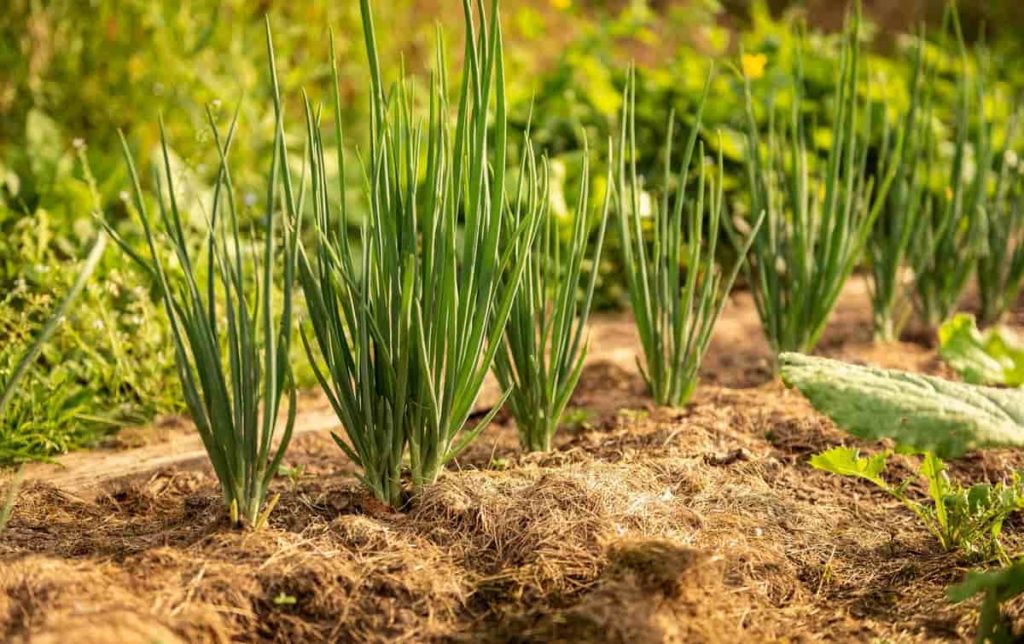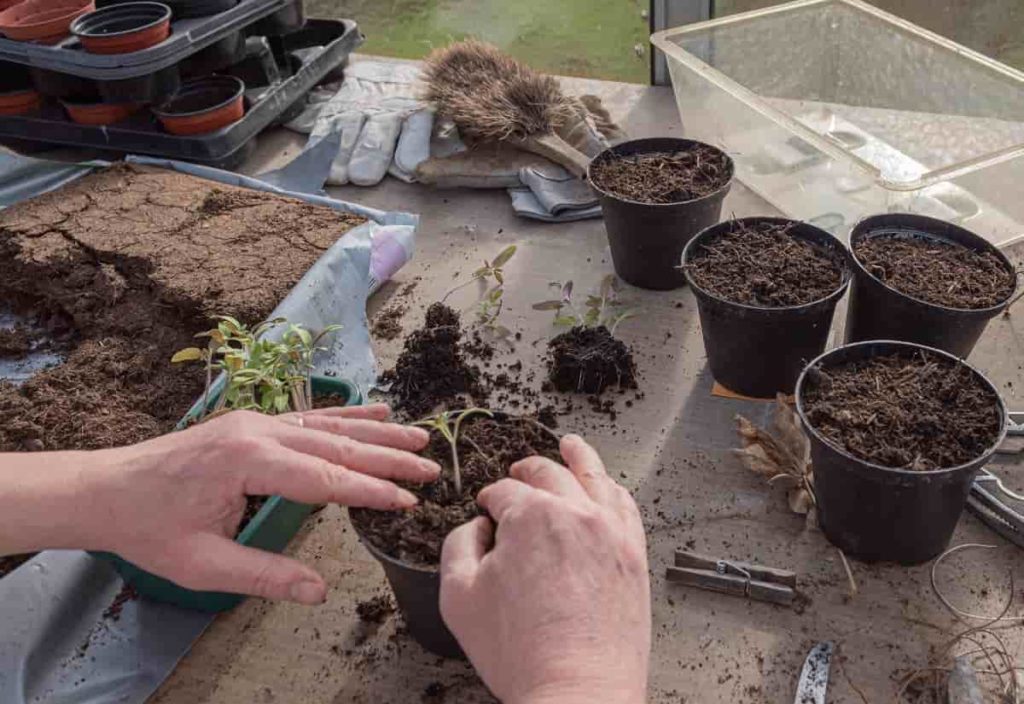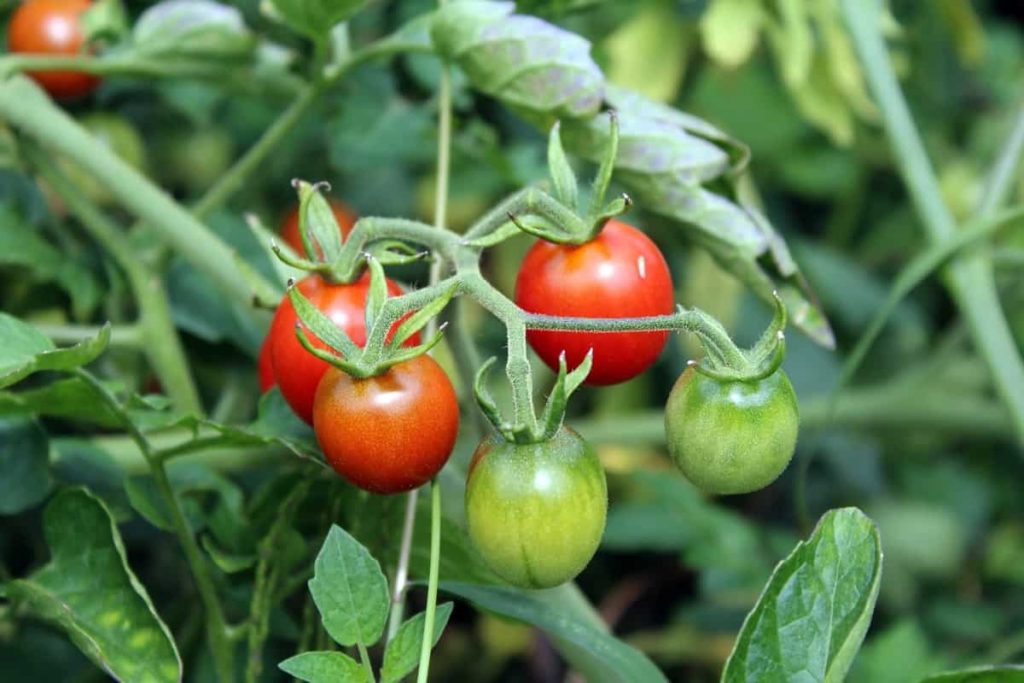Introduction to organic vegetable gardening for beginners: Organic vegetables provide the family with healthy, tasty, pesticide-free produce. Some organic gardening basics are similar to nonorganic gardening. It is best to plant in an area that receives full sun for at least 6 hours a day (8 to 10 hours is better).
Make sure you have a spigot and hose that can reach every corner of your garden. Organic vegetable gardening is a component of organic agriculture that enhances the farm’s natural diversity and biological cycles. Organic gardening relies on natural fertilizers and pesticides rather than synthetic fertilizers and pesticides.
Guide on organic vegetable gardening for beginners, basics, vegetables to grow organically, tips, benefits

The basics of organic vegetable gardening for beginners
Site selection
Most vegetables require full sunlight, typically five to six hours of direct sunlight throughout the day. Excessive shade results in spindly, weak plants susceptible to disease and produces little fruit. Consider a garden even if you don’t have a sunny spot. A few vegetables will produce in partial shade, even if they grow relatively slowly. Beets, spinach, lettuce, Kale, Carrots, and Peas are among them. It is preferred to have the garden close to the kitchen, as not only is it convenient, but woodchucks, rabbits, and deer are less likely to venture close to the house.
Size of a garden
Space, water, and time-not only for planting but also for maintaining a garden- determining the garden’s size. It’s also essential to think about the amount and type of vegetables you want and whether or not you will preserve any of the harvests. Start small and expand when you can maintain a more extensive garden. Squash, Corn, and melons need a lot of space, so they’re best avoided if limited space. Estimated yields per 50 feet of the row are provided for each vegetable in the description.
Amendment of soils
All soils can support some plant life, but the soil must provide ample basic requirements for a garden to produce a good harvest. They include ample amounts of water, air, and mineral nutrients. It is the physical features of the soil that determine its ability to retain water and air. On the other hand, soil fertility refers to the soil’s ability to supply plants with nutrients.
It is possible to adjust both soil structure and fertility to suit the needs of vegetables through the addition of soil amendments and specific practices. As mentioned briefly in the introduction, organic gardening entails keeping healthy soil that will provide plants with air, nutrients, and water. Unfortunately, several “modern” agricultural practices employ methods that feed plants directly with synthetic chemicals in the form that is immediately available to plants. As a result, highly soluble chemicals are lost whenever water passes through the soil.
Planting
Before planting a garden, draw a plan. Identify the locations of the crops and the distance between the rows. For example, tall vegetables are best planted on the north side of the garden to avoid shading the short ones. Planting crops susceptible to the same insects or diseases near each other is not a good idea. Regardless of the size of the garden, crop rotation is essential.
In case if you miss this: Top 30 Vegetables To Grow In A Greenhouse

Several plant pests overwinter in the soil and build up from year to year if they are provided with a host every spring. The repeated planting of crops in the exact location depletes the soil of particular nutrients. Crops in the same family should not be replanted in garden space for two or three years. It is ideal to have two or more garden plots far from each other.
A guide to starting an organic vegetable garden for beginners
The popularity of organic food drives gardeners to switch to organic gardening methods. Beginners and experienced gardeners wanting to go organic will find these tips helpful.
Mulch and organic garden soil are the best places to start
Healthy soil is the basis for a healthy organic vegetable garden. Among the most critical soil components is organic matter, such as manure, peat moss, and compost, which is the best option because it contains decaying microorganisms of previous plant life. As a result, plants get the nutrients they need from these microorganisms. You can create your compost pile by establishing an area or bin to decompose the organic matter.
You can buy compost in bulk or buy bagged compost at garden centers and home improvement stores if you have a large garden. Next, apply a 1- to 2-inch-thick layer of mulch to the soil to prevent weeds. As a result, weeds cannot get sunlight and cannot germinate. Instead, they use organic material (such as cocoa hulls, weed-free straw, or newspapers) as mulch prevents fungal disease spores from drifting to plant leaves. In addition, it provides soil with beneficial organic matter.
Fertilize your garden organically
You can grow your vegetables faster and yield larger crops by fertilizing them. Plant-eating critters such as rabbits, horses, sheep, and chickens and prepackaged organic fertilizer bought at a garden center or online are examples of organic fertilizers. You can also purchase organic fertilizers at home improvement stores and garden centers. If you already have rich soil, you might be able to skip applying fertilizer. However, if your plants grow too much lush, muted growth, pests will love them.
Shopping tips for seedlings
Specifically, extension service experts suggest choosing seedlings with healthy colors and no yellow leaves when shopping for seedlings. Avoid seedlings with limp or wilting leaves. If you’re shopping for transplants, gently tap the plant out of the pot to see if the roots are well-developed and white. Keep away from budding and flowering plants. Pinch buds and flowers off before planting if you cannot avoid them so that the plant can focus all its energy on setting new roots.
In case if you miss this: Top 14 Lettuce Companion Plants, Planting Guide

Raised organic beds
It is easier to care for plants in elevated plots because they are easier on your back. Make the bed as small as possible so you won’t have to step on the soil or reach far.
Rotate your crops
Avoid planting related plants where their relatives grew a year or two earlier since many are affected by the same diseases. There are two essential families to watch: the tomato family (tomatoes, potatoes, peppers, eggplant) and the squash family (squash, cucumber, pumpkin, watermelon). Disease development is limited by rotating crops among the different garden areas, depleting soil nutrients.
You need to pick weeds
It’s a pain to deal with weeds. They seem to appear overnight. Weddings are great for gardeners. After rain or watering, weeding by hand is more manageable. Wait until the soil dries a bit if the soil is wet and muddy. There are two ways to pull weeds. Pulling the root out while pinching the base of the stem is one method. The root system can also be levered out using a weeding trowel. The tops of weeds can also be removed with a hoe, but be careful not to damage any vegetables.
It is essential to remove the roots of weeds to prevent them from growing back. Grass competes for water and nutrients with your plants, attracting pests. Insects spread disease from plant to plant as they feed. Picking off insects by hand is the most organic (and easiest) way to control insects in your garden. Use gloves if you are afraid of getting your hands dirty.
Maintain your garden
Dead, fallen foliage is a breeding ground for many diseases. Pick up shed foliage once a week (or more often if possible) when you walk through your garden. Sometimes, picking off an infected leaf can prevent the spread of disease throughout the plant. Don’t compost dead or diseased leaves.
In case if you miss this: Paprika Gardening, How To Start, Tips, and Ideas

Plants need air & water
Mildew thrives on wet leaves, predominantly afternoons and evenings. Utilize a soaker hose instead of overhead irrigation, which delivers water directly to the roots and prevents splashing. To avoid crowding, follow the spacing instructions on seed packets. A good airflow between plants can help prevent fungus diseases.
Vegetables to grow organically
Cherry Tomatoes
Bite-size tomatoes are a good source of lycopene, which protects against osteoporosis and prostate cancer. In addition to cherry tomatoes, cherry tomatoes also make up part of the Dirty Dozen list for having 69 different pesticide residues. It is believed that the majority of these pesticides are hormone disruptors, neurotoxins, and toxic to reproductive health. Cherry tomatoes contain 13 different pesticides, according to the Environmental Working Group.
In case if you miss this: Top Indoor Plants, Tips, Ideas, and Techniques

Cucumbers
Cucumbers are among the most popular fruits (yes, fruits) globally. Unfortunately, USDA Pesticide Data Program reports that cucumbers contain 86 different pesticides. Some of these pesticides are known carcinogens and are incredibly harmful to the environment. Conventional cucumbers are also covered in synthetic wax as an additional measure of protection. If you’re using non-organic cucumbers, be sure to remove the skin. The wax contains chemical contaminants. Go organic if you want to avoid pesticide residues and synthetic waxes.
White Potatoes
Most North Americans grew up eating the classic meat and potatoes dinner. In addition to being incredibly starchy and lacking in nutrition, white potatoes are often demonized as unhealthy. However, white potatoes are high in fiber. Additionally, these tubers are added to the Dirty Dozen list due to their presence of 35 pesticide residues, some of which are suspected hormone disruptors.
According to the Environmental Working Group, potatoes contained more pesticides than any other produce item by weight. Sweet potatoes are not the same as those listed among the “Clean Fifteen” foods. There are fifteen fruits and vegetables on this list with the lowest pesticide concentration.
Spinach
One of the healthiest vegetables, spinach is a versatile leafy green rich in vitamin A, vitamin K, and iron. Unfortunately, it is also heavily sprayed. Despite ranking seventh on the Dirty Dozen list, it still contains harmful pesticide residues, despite not having as many pesticides as other produce higher up. There are 54 pesticide residues in spinach, which are neurotoxic and toxic to honeybees. Insect repellent, carcinogenic, hormone-disrupting, and toxic to honeybees, permethrin is used on spinach.
In case if you miss this: Aster Gardening For Beginners, How To Start, Tips

Kale
Leafy vegetables are among the Dirty Dozen. Despite being high in fiber and protecting against cancer, arthritis, heart disease, and diabetes, Kale is one of the most heavily sprayed crops globally. According to the Environmental Working Group, insecticides present in Kale threaten the nervous system. Approximately 55 pesticide residues can be found in Kale. However, it’s not hard to find organic Kale, and organic Kale costs about as much as conventional Kale, so it’s worth switching.
Benefits of organic vegetable gardening for beginners
- Easy access to fresh vegetables
- The taste of the food is improved because it is fresh and chemical-free
- The ability to save money
- Nutritionally improved
- Refrain from using pesticides
- Reduce your exposure to harmful chemicals
- This product does not harm the water table
- Ultimately, this will result in a better environment
- Increases biodiversity
Tips for organic vegetable gardening for beginners
- For the vegetables to grow well, the soil needs to be fertilized. A layer of compost or fertilizer at least two inches deep can help prevent diseases from affecting the roots of your vegetables. Also, it is better to use organic pesticides rather than regular ones.
- Watering techniques will vary depending on the vegetables you plant. While some vegetables require a lot of water, others need just enough. Please do not wet the leaves of your vegetables, as wet leaves can attract pests. Remember, you can plant vegetables just like you plant other types of plants. Following specific tips will ensure that your vegetables grow perfectly healthily.
- All plants will grow better and be more productive in rich garden soil containing lots of organic matter, regardless of whether they survive in poor soil. So before you plant anything in your garden bed, take the time to work in lots of compost and other organic materials.
- Find out what types of vegetables and which varieties will thrive in your growing environment before planting anything in your garden. Aside from considering the type of growing zone, you should also think about how much sunlight and rainfall your garden will receive.
- Farmers’ markets, other gardeners, and garden center staff can often provide you with insight into which specific varieties are best suited to your region.
- Choosing plants that are well-suited to your growing conditions will require much less watering and care, so it’s well worth the time to choose them carefully.
- Organic matter is one of the best things you can do for your vegetable garden. Compost increases soil moisture retention and provides nutrients to plants, worms, and microbes that help improve the soil.
- You can easily make your garden compost by piling up a mixture of leaves, grass clippings, eggshells, coffee grounds, and other organic household waste.
Commonly asked questions about organic vegetable gardening for beginners
1. How should I feed my organic vegetable garden?
It is possible to buy organic fertilizers in granules, such as Tomato, Vegetable, & Herb fertilizers, or liquid, such as Fish & Kelp fertilizers. Mix granular fertilizers into the soil when planting and every two months if the plants are established.
2. How should organic vegetables be grown?
- Prepare the soil before you plant
- Use plants appropriate for the climate and conditions in your area
- Plant flowers around your garden to attract bees and other pollinators
- Composter and mulch your organic material
- Buy seeds and starter plants from reputable sources
3. What is the best way to prepare the soil for an organic vegetable garden?
As part of soil preparation, compost, aged manure, mulch, or cover crops (green manures) are recommended. Chemical fertilizers will only replenish certain nutrients in maintaining good, friable soil.
4. What is the best time to plant an organic vegetable garden?
The first planting needs to be done as soon as possible, but only if there is no chance of frost. As soon as the soil is ready for work, usually, four weeks before the last frost date, hardy plants are put into the garden. They can generally tolerate temperatures below freezing.
5. How do you grow organic vegetables?
- Cover the garden with mulch. Ensure the soil is organic and the mulch is a layer of organic mulch
- Fertilizer containing iron pellets. Apply organic garden fertilizer
- A gated container garden for vegetables
- We raised organic beds
- A vegetable and flower garden in the country
- Clearing the garden of weeds
- Cover garden plants with soaker hoses
- Asparagus Seed Germination and Variety Selection
- Seasonal Flower Gardening: Best Practices for Spring, Summer, Fall, and Winter
- How to Grow Hibiscus from Flower
- Plantation Ideas for Home Decoration: A Beginners Guide
- Flower Garden Designs and Layouts for Beginners
- Planting and Spacing Techniques in Papaya: A Beginner’s Guide
- Growing Gold: Essential Techniques for Planting Pineapples
- How to Make Kalanchoe Plant Bushy: Home Remedies and Solutions
- 11 Reasons Why Your Gardenia is Not Blooming: Home Remedies and Solutions
- Eco Elegance: The Guide to Designing a Drought-Tolerant Landscape
- Gardening on a Slope: Strategies for Hillside Landscaping
- Nourish and Flourish: Top Organic Mulches for Thriving House Plants
- Everything You Want to Know about Indian Mogra Flower: Discover Uses and Growing
- Green Thumb Success: Expert Tips for Cultivating Greenhouse Pumpkins All Year Round
- Maximize Growth & Flavor: The Ultimate Guide to Companion Planting in Herb Gardens
- How to Control Rhododendron Problems Naturally: Home Remedies and Organic Ways to Fix Them
- Natural Magic: The Remarkable Benefits of Cinnamon for Plants
- Best Steps to Revive Dying Tulip with Natural and Organic Treatment
- 10 Reasons Why Your Angel Trumpet is Not Blooming: Remedies and Treatment
- How to Fix Periwinkle Leaf and Flower-Related Problems: Natural Remedies and Solutions
- How to Fix Zinnias Leaf and Flower Problems: Discover Natural and Home Remedies
- Organic Steps to Induce Lemon Tree Flowers: A Comprehensive Guide
- Bloom Booster: Crafting the Perfect Homemade Bougainvillea Fertilizer
- Optimizing Growth: A Guide to Applying NPK Fertilizer for Potted Plants
- 10 Best Homemade Fertilizers for Rubber Plant: DIY Recipes and Application Method
- How to Boost Female Pumpkin Flowers: Effective Steps for More Flowers and High Yields
- Transform Your Indoor Garden: Top Benefits of Pink Salt for Houseplants
- 10 Best Homemade Fertilizers for Peacock Plants (Calathea): Easy DIY Guide
- Unlock Blooms: 9 Reasons Why Your Potted Chrysanthemum is Not Blooming
- 8 Reasons Why Your Potted Hibiscus is Not Blooming: Fix it with Simple Solutions
- Unlock Blooms: 9 Key Reasons Your Potted Frangipani Won’t Flower
- 10 Reasons Why Is My Ice Plant Not Blooming: Remedies and Treatment
- 10 Reasons Why My Potted Hydrangea Not Blooming: Treatment and Remedies
- 10 Reasons Why is My Wisteria Not Blooming: Remedies and Treatment
- 10 Reasons Why is My Goldfish Plant Not Blooming: Remedies and Treatment
- Maximize Your Space: Ultimate Guide to Balcony Gardening with Grow Bags
Thank God, I found this website…